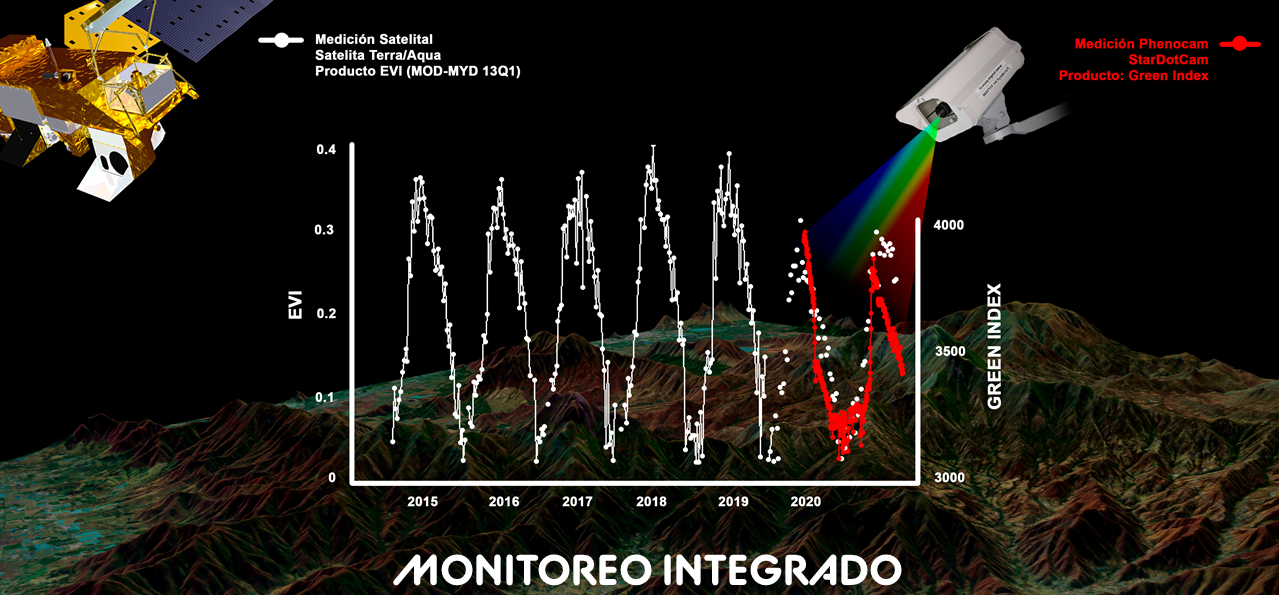A spatiotemporal assessment of major disturbances on Chilean vegetation phenology, productivity and resilience using 40 years of continuous remote sensing records
[2021 – 2024]
Proyecto FONDECYT regular Nº1211924
Investigador Responsable: Roberto O. Chávez
Coinvestigadores(ras): Ducan Christie, Alvaro Gutierrez, Sergio Estay
Ayudante: José Lastra
Chile is an active member of the United Nations Framework Convention on Climate Change (UNFCCC) andas such, is committed to take actions and implement policies towards sustainable development andconservation of its natural patrimony (MMA, 2017). The UNFCCC requires reliable and updated informationusing international standards to assess and compare different countries and report about the status of theEarth system at a global scale. In 1994, Chile ratified the Convention on Biological Diversity (CBD) andcommitted to assess and report also on the status of Chilean biodiversity. In 2010 the CBD defined specifictargets, the Aichi targets, along with a set of indicators to monitor the level of achievement of thesetargets. Efforts from the remote sensing scientific community to contribute to monitor the Aichi targetshave been materialized in the proposition of a set of Essential Biodiversity Variables (EBV) (Pereira et al.,2013; Pettorelli et al., 2014; Skidmore et al., 2015), an international standard coordinated by the Groupon Earth Observation – Biodiversity Observation Network (GEO-BON; https://geobon.org), from whichChile is also member. GEO-BON standards include all biodiversity dimensions (from genes, species traits,up to ecosystem functions) and are organized in national, regional and global networks (Nature editorial,2019). From the 21 EBV’s at least 10 can be retrieved using remote sensing techniques, and therefore,Chile must prepare to have the human and technological resources to process the existing and futuremassive amount of freely available remote sensing data and to provide comprehensive reports of itsbiodiversity status (Maass et al., 2019). Different from climate variables, due to its local particularities,EBV cannot be researched from a global perspective and scientific research need to be done to support anational monitoring system for the unique Chilean species, populations and ecosystems. In this proposal,we aim at contributing to the study of two key EBV for Chile: vegetation phenology,or the recurringseasonal life cycle of plants, (a species trait) and ecosystem extent(an ecosystem function) by assessingmajor disturbances and their consequences for the phenological cycles and spatial distribution of Chileanvegetation types during the remote sensing era (1980-now).
Towards a Chilean phenological monitoring system
In Chile, the research team leading this proposal has taken some steps towards the implementation of aChilean phenological monitoring system. In close cooperation with the Forest Service (Conaf),we have developed monitoring systems in four units of the National System of Protected Areas, SNASPE. These platforms, based on 20-years of NASA Moderate Resolution ImagingSpectroradiometer (MODIS) data, are automatically updated as soon as new MODIS data is acquired,providing timely and valuable information to assist Conaf management. To achieve this, we developed a flexible and robust algorithm, capable to process massive amounts of remote sensing data and to detectdisturbances with a probabilistic significance measure. This is especially relevant for policy makers, whocan decide based on statistically significant and spatially explicit evidence. The platform is complementedwith field Phenocams, which acquire pictures of relevant conservation targets from which indices (e.g. green index) are retrieved and used to validate remote sensing records). Conaf and also the Ministry of Environment have highlighted the relevance of having these systems at anational scale. Still, more research has to be done to test our approach for the wide spectrum of Chileanvegetation ecosystems, their phenological dynamics, the impact of different disturbances and theirresilience to single or multiple disturbances.

[Extracto propuesta postulación Fondecyt Regular 2021]
